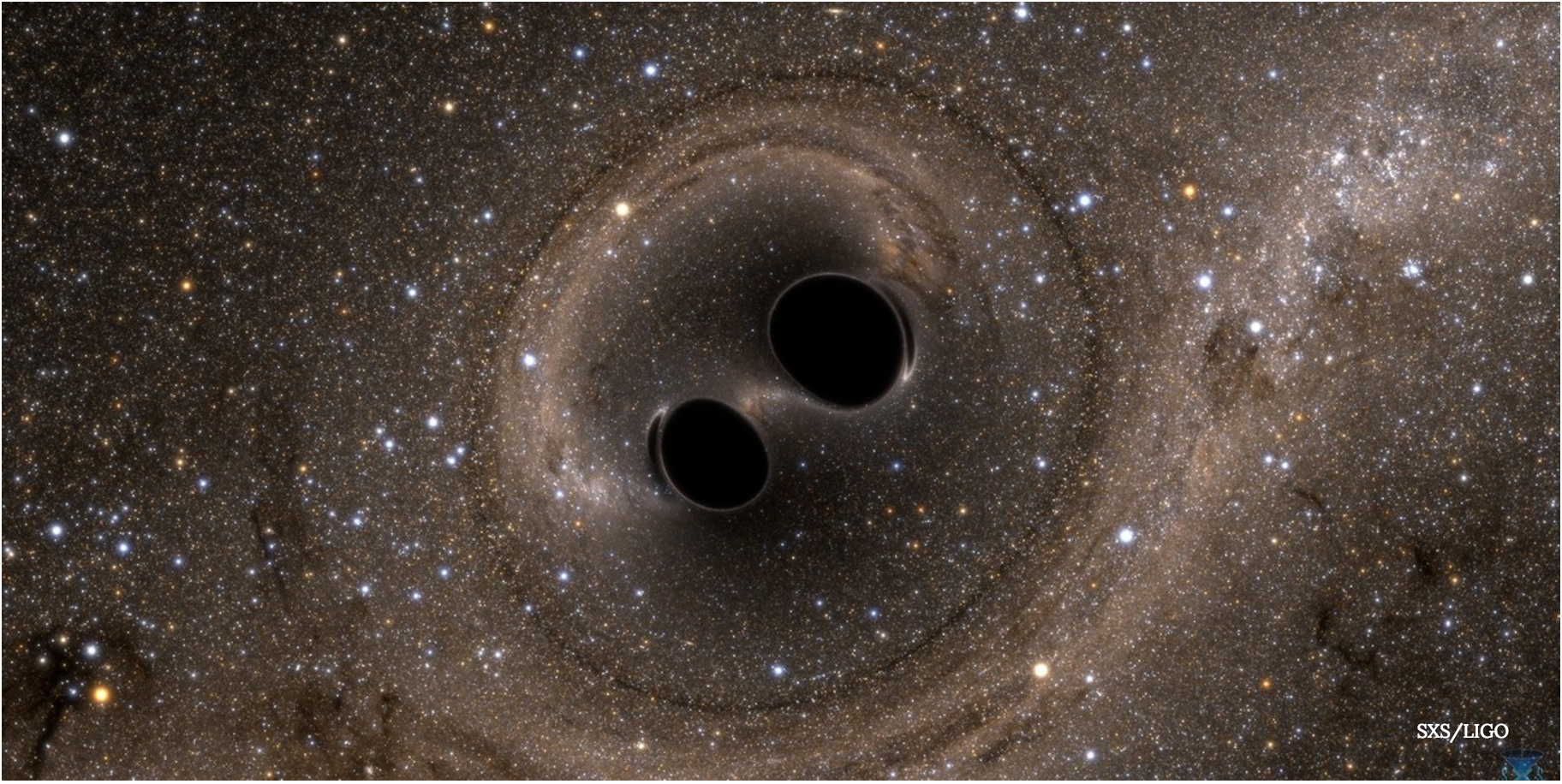Did LIGO's Black Holes Come From the Dawn of Time?

This is the question currently being pondered by physicists studying the revolutionary first detection of gravitational waves in the Summer of 2015. And, in new research, the answer could be primordial.
RELATED: Gravitational Waves to Crack Neutron Star Mystery
Generated by the cataclysmic collision of two black holes some 1.3 billion light-years away, the discovery, made by the Laser Interferometer Gravitational-wave Observatory (LIGO) and announced on Feb. 11, confirmed Albert Einstein's 100-year-old theory of general relativity and heralded a new era of gravitational wave astronomy.
With breathtaking precision, the gravitational wave signal — called GW150914 — revealed two black holes, one 29 solar masses and the other 36 solar masses, get trapped in an orbital dance that ultimately resulted in their collision and merging as one. The signal wasn't only the first direct detection of gravitational waves, it was the first time astronomers "saw" the guts of one of the most energetic collisions in our universe. And, best of all, the gravitational waves LIGO detected precisely matched our theoretical predictions about what black holes are and how they act before and after a merger.
On June 14, a second announcement came about another detection of gravitational waves, confirming the first detection wasn't a fluke.
WATCH VIDEO: More Gravitational Waves Detected By LIGO!
As momentous as this landmark discovery was, a puzzle quickly presented itself.
Breaking space news, the latest updates on rocket launches, skywatching events and more!
Generally, the most common black holes found in the modern universe come in two broad categories: stellar mass black holes and supermassive black holes. Stellar mass black holes are, you guessed it, formed after a massive star explodes as a supernova. Supermassive black holes, which "weigh in" at millions to billions of solar masses, are the monsters that live in the centers of galaxies. (There is currently a lot of work going into understanding how black holes evolve from stellar to supermassive and some studies have found "intermediate mass" black holes may be the "missing link", though we have some ways to go before working out if this is the case.)
In short, the two black holes that generated GW150914 were too big and can't be explained as being two stellar mass black holes colliding and merging as one. So what kind of black holes were they?
RELATED: We've Detected Gravitational Waves, So What?
Dark Matter Clues?
In two new papers published in the journal Physical Review Letters, researchers take a stab at identifying the origin of these precursor black holes, leading to the conclusion that they may have been formed when the universe was very young. In other words, LIGO could have been witness to the smashup of two primordial black holes -- the most ancient kind of black holes. What's more, future detections of similar collisions could provide tantalizing clues as to whether primordial black holes make up the majority (if not all) of the universe's missing mass. In other words, could these massive objects be the dark matter astrophysicists are looking for?
Some universal evolution models predict the rapid formation of black holes shortly after the Big Bang. The early universe was full of dense knots of matter that likely collapsed under mutual gravity forming a huge number of massive black holes. Though black holes are thought to evaporate over time (via Hawking radiation), many of these primordial black holes are thought to persist, bulking up the universe's missing mass, creating the strange observations of galaxies and galactic cluster that appear to be more massive than the visible matter they contain.
RELATED: Hawking: Gravitational Waves Could Revolutionize Astronomy
There's much debate over the range of masses these primordial black holes could form and how often LIGO (and other gravitational wave detectors in the future) will detect them, but it is clear that this new exciting era of gravitational wave astronomy is already hot on the trail of one of the biggest mysteries of modern astrophysics and cosmology.
Could primordial black holes be the answer? Only time will tell; we need to detect a lot more of these strangely-sized black hole collisions before we'll know where dark matter is hiding.
via Science News
Originally published on Discovery News.
Ian O'Neill is a media relations specialist at NASA's Jet Propulsion Laboratory (JPL) in Southern California. Prior to joining JPL, he served as editor for the Astronomical Society of the Pacific‘s Mercury magazine and Mercury Online and contributed articles to a number of other publications, including Space.com, Space.com, Live Science, HISTORY.com, Scientific American. Ian holds a Ph.D in solar physics and a master's degree in planetary and space physics.

